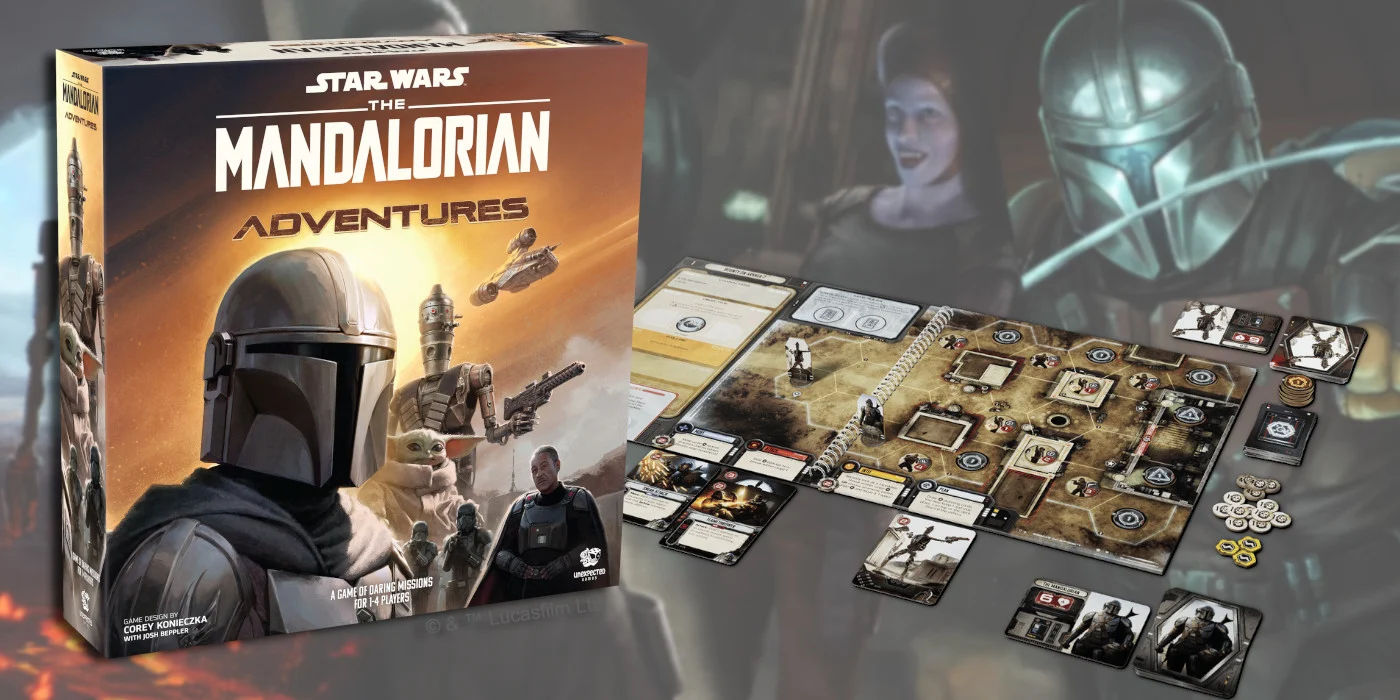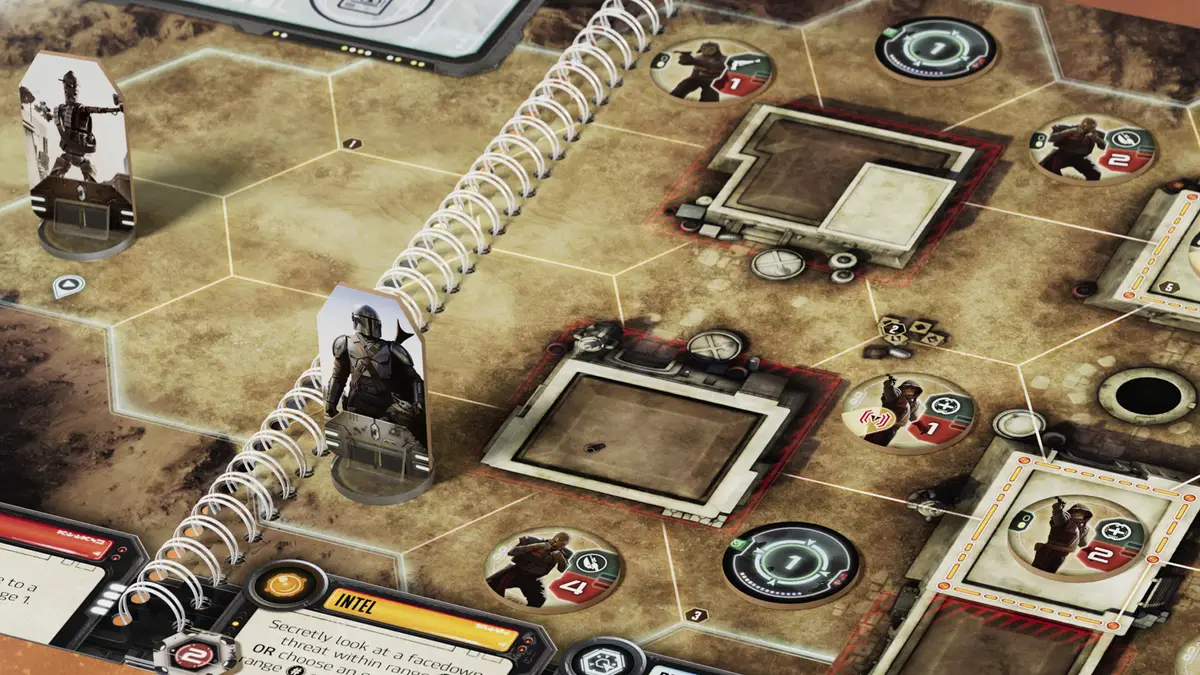The Mandalorian: Adventures Board Game Review
Cooperative games are on the rise right now, and with the continued success of Star Wars shows on Disney+, it makes sense that there would be a cooperative Star Wars experience for board game fans to sink their teeth into. Not surprisingly, the choice to headline that cooperation was The Mandalorian, one of the most popular original shows on Disney+, and many people’s favorite piece of Star Wars work. I was a bit skeptical of how good a mass market Star Wars game could be, but after playing through the game’s various scenarios, I was pleasantly surprised.
Worth noting off the top is that this game can be played in one of two ways – an easier mode where players have more health at their disposal, and a harder mode where, obviously, you have less health. I can confirm that you will likely lose, and lose often, if you choose the harder route, but that can make winning much more rewarding. If you want to just enjoy some very intuitive gameplay, with some solid mechanics and still a good amount of challenge, the easier route is still great fun. It’s also much better for younger players.
In The Mandalorian: Adventures, players will choose to play as a specific hero and attempt to complete a specific mission each game. I don’t want to ruin anything that happens, but the first scenario closely follows the TV show. You will need to go and rescue Grogu, and safely take him away. Each mission unfolds – pun intended – on a very usable and wonderfully detailed board-book, where you will turn pages to reach comics and play missions until you’ve completed the game. You can read more about the game’s components in our components overview and impressions article .
Each player will have a deck of action cards, with numbers ranging from 1-4. Some cards will have additional bonus actions that can be taken, and more cards will be unlocked as you play. Cards are then placed, two per turn, one a number of different available action spaces. For your first game, this will include movement, attacks, intel, and planning. You must choose two different actions each turn, and once the total value of cards (and potential tokens, we won’t get into that here) exceeds 5, you will have to draw an event. If it exceeds 6, you will complete a threat and then draw an event.
These event and threat moments are what propels the enemy side, and while unavoidable, good card placement can minimize the impact these cards will have. The difference between the 5 and 6 values – 6 brings on a threat that is NEVER good – makes for a number of interesting choices. See, the value card you place on an action is the amount of that action you can take. A 4 card on movement lets you move 4, on attack it lets you attack 4, on intel it allows you to look at a facedown threat token 4 spaces away, and on planning it allows you to draw 4 cards from the planning deck and keep one. That being said, placing a higher level card might tip a specific action over the threshold, resulting in an event, or a threat and an event.
So oftentimes, you are working towards only reaching the 5 number threshold, which requires very specific card play. At first this picking and choosing was pretty stressful, but was more enjoyable as more cards became unlocked, providing you more opportunities, which again we won’t ruin here.
There are secret envelopes that can be opened after your second game, but again…not something we want to talk about in this review. Rest assured the added content makes the entire experience more interesting, and better overall. What begins as a pretty basic board game evolves and expands as players become more familiar with the mechanics. I love this slow roll-out in cooperative, legacy style games. Especially for new board game players. As a mass market experience, there is potential this could be a lot of individuals’ first foray into the board game space.
Even for seasoned board game players, there is a lot to enjoy in The Mandalorian: Adventures. While the first game or two might feel a bit too light, things do get progressively harder, even when playing on the easier mode. Our first play through of this game was incredibly enjoyable, and I look forward to introducing it to new players in the near future. One word of caution – I think this game is best played with two players, as adding more or having less changes the dynamic in ways that I didn’t find exciting or entertaining.


